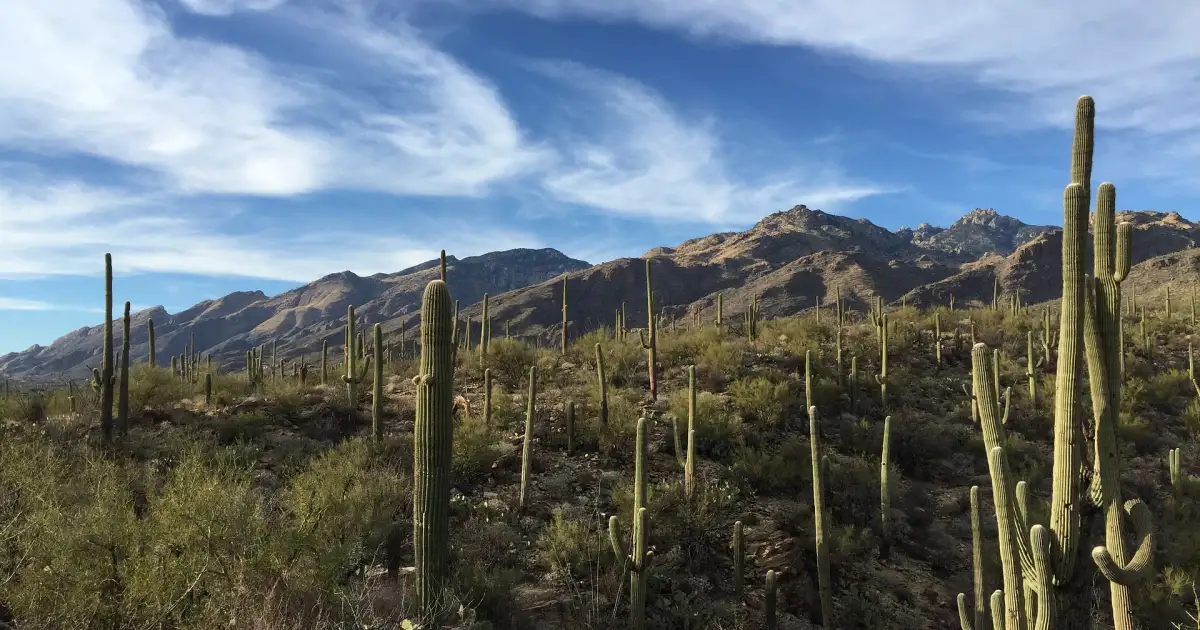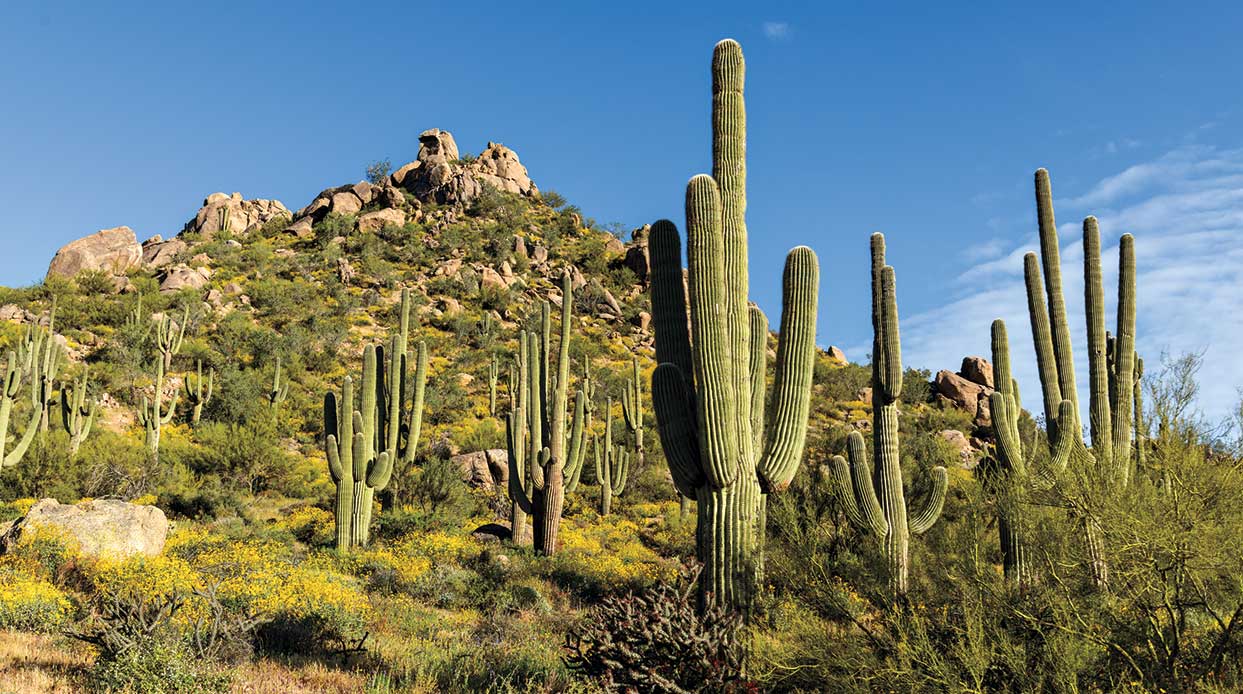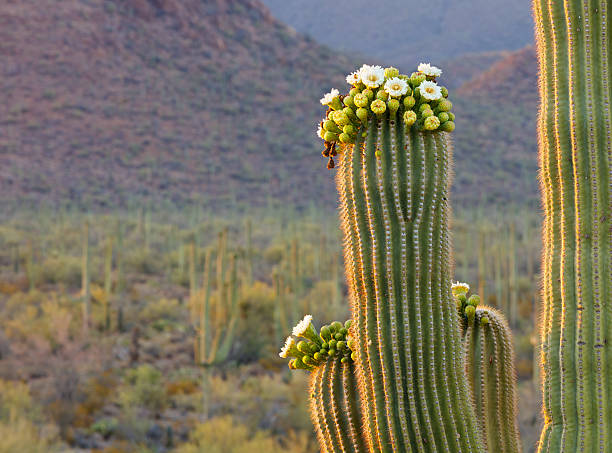Saguaros stand out as one of the most captivating members of the cactus family. These remarkable plants elevate themselves with arms extended in an everlasting greeting, making them the tallest cacti found in the United States.
This iconic cactus has learned to adapt -to not only survive – but to thrive in the Sonoran Desert, its native home. There’s a reason so many people are fascinated by this desert plant. Among the cactus family, the saguaro stands as one of the most-researched species. While there is endless information, to make this short, we’ll share our five favorite fascinating facts!

#1 Saugaros Are Named After Andrew Carnegie
The Saguaro, also known as Carnegiea gigantea, gets its name from Andrew Carnegie, a prominent industrialist and philanthropist. In 1903, the Carnegie Institution established the Desert Botanical Laboratory in Tuscon, which has evolved into Tumamoc: People & Habitats, now affiliated with the University of Arizona’s College of Science.

#2 Some Saguaros Grow a Rare Formation Known as “Cristate” or “Crested”
Only a few saguaros exhibit the “cristate” or “crested” growth, characterized by a fan-like shape. The origin of this mutation still remains unknown. However, some hypotheses lead us to believe first damage, lightning strikes, or genetic factors could’ve caused the cristate. According to experts, there are over 2,000 documented crested saguaros in the Sonoran Desert.

#3 Ability to Hold And Store Water
In order to survive strenuous periods of drought and harsh conditions that the Sonoran Desert often undergoes, saguaros have developed a number of strategies, including their ability to store water. With their ribbed, accordion-like structure and succulent stems, saguaros can amass hundreds of gallons of water when it rains. As the water accumulates, the saguaro’s skin stretches to accommodate the increasing volume. As a result, these cacti can become notably weighty; at peak hydration, they can weigh up to one ton!

#4 Refuge for Desert Wildlife
The saguaro cactus serves as a Sonoran Desert hotel for several species of desert wildlife. Gila woodpeckers are the first to arrive, carving out holes in the saguaro. In several months, the saguaro’s inner pulp will harden, creating a protective casing around the hollow. After these birds raise their young, these nest holes become sought-after shelters for several other animals, including elf owls, flycatchers, cactus wrens, and more!

#5 Can Grow As Many As 25 Arms
Saguaros experience slow growth. Sometimes growing just one arm may take up to 50-70 years! Remarkably, some saguaros have been documented with 25 arms! Nevertheless, some saguaros never grow an arm – a mystery that remains unsolved.









